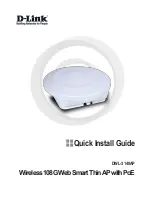
2-7
Cisco uBR7225VXR Universal Broadband Router Hardware Installation Guide
OL-17309-01
Chapter 2 Preparing the Cisco uBR7225VXR Router for Installation
Required Network Information
•
Ensure that the network processing engine, cable interface line cards, any blank cable interface line
cards, power supplies, and any power supply filler plates are in place and secure. The fans direct
cooling air throughout the chassis interior; a loose component or empty slot can redirect the airflow
away from active components and cause overheating.
Power Considerations
Follow these precautions and recommendations when planning power connections to the
Cisco uBR7225VXR router:
•
Check the power at your site before installation and periodically after installation to ensure that you
are receiving clean power. Install a power conditioner and appropriate surge suppression if
necessary.
•
Install proper grounding to avoid damage from lightning and power surges.
Required Network Information
After you install the chassis, your system administrator must configure the individual and system
interfaces before you connect your system to external networks. Refer to the following documentation
for configuration information.
Cisco uBR7200 Series Software Configuration Guide
at the following URL:
http://www.cisco.com/en/US/docs/cable/cmts/ubr7200/configuration/guide/cr72scg.html
Cisco IOS CMTS Cable Software Configuration Guide
at the following URL:
http://www.cisco.com/en/US/docs/ios/cable/configuration/guide/12_2sc/cbl_12_2sc_book.html
Cisco IOS CMTS Cable Command Reference Guide
at the following URL:
http://www.cisco.com/en/US/docs/ios/cable/command/reference/cbl_book.html
Before You Begin
Be prepared with global (system-wide) parameters such as:
•
Hostnames
•
Passwords
•
Routing protocols
•
Configuration information for each interface, such as:
–
Addresses
–
Rates or speeds of operation
–
Routing protocol specifics
Following is the information you might need, depending on the services you plan to offer:
•
Hostname for the router.
•
Passwords to prevent unauthorized privileged-level access to the EXEC command interpreter and
for individual virtual terminal lines.
•
Protocols you plan to route.
•
IP addresses and subnet masks, if you are routing IP.
















































